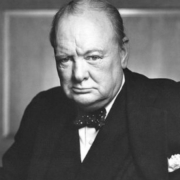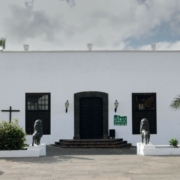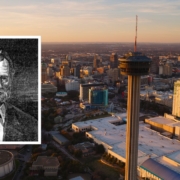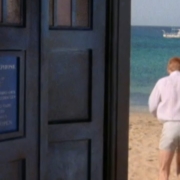British tourists account for more than 50% of the island’s visitors, but how many of them know that Churchill planned to invade the Canary Islands in 1941?
In 1940, Adolf Hitler met with Franco’s foreign minister Serrano Suñer to discuss a planned invasion of Gibraltar in June 1941, and German and Spanish troops were ordered to prepare for the attack.
Gibraltar was essential to Britain’s war effort. Churchill wrote “Spain held the key to all British enterprises in the Mediterranean”, which included the island of Malta and Egypt. The possibility of losing Gibraltar forced the British government to make alternative plans.
One of those plans was Operation Pilgrim, the British plan to invade the Canary Islands. Churchill wrote “If we are forced from Gibraltar, we must take the Canaries immediately, allowing us to control the western entry to the Mediterranean.”.
The plan was to begin at Puerto de la Luz, Gran Canaria’s main port, with a landing by two infantry battalions from troop carriers with air support provided by an aircraft carrier. Gran Canaria’s airport would then be seized with the help of an invasion from the bay of Ariñaga. After that, the island would be used as a base for a later attack on Tenerife.
Adolf Hitler caught wind of Operation Pilgrim and recommended the placement of anti-aircraft guns and Stukas in the Canaries, where defences were outdated. Many of the islands’ artillery pieces dated from the Cuban War of 1898, air defences consisted of 25 old Fiat biplanes and supplies were frequently moved by camel.
Military officials on the islands requested armaments but Franco responded by sending concrete, and several bunkers were built to defend the coast. Many of these still exist today, with the most complex being found in El Pulpito in Tenerife and Tamaraceite in Gran Canaria.
Churchill warned the US that the invasion would commence in September 1941, but events soon brushed the plan aside. Germany focused on the eastern front and Operation Barbarossa, while distrust between Hitler and Franco, as well as British intelligence work, meant that Gibraltar remained in British control.
LANZAROTE’S INVOLVEMENT
In addition to the pillboxes built in Tenerife and Gran Canaria, pillboxes were also constructed and reinforced along the Lanzarote coastline from Puerto del Carmen and Arrecife to Famara and Punta Mujeres – anywhere where a military landing might be possible. Many have been demolished, but several still exist – often used as refuges by hunters.
They included the bunker next to Mirador del Río, which had existed since the Spanish-American War of 1895, but was reinforced, and a new bunker at Punta Limones in Playa Blanca.
A pillbox from the Punta Limones battery can still be seen on the rise next to Playa Flamingo, although the rest of the battery has been demolished or built over. This, along with a parallel battery in Fuerteventura, would be the main means of defence of the Strait of Bocaina.
Further reading: Juan Jose Díaz Benítez. Fortificaciones construidas en Fuerteventura y Lanzarote durante la II Guerra Mundial (2009).
G. Tomezzoli. The Pillboxes of Lanzarote, (2019)










